Three Big Days in North Wales
To make a change from us writing our blog, we hand over the space to one of our wonderful clients, Barry Nightingale. It may be November outside, but let Barry transport you to May and the marvellous birds to be enjoyed in the warm spring sunshine...

Barry and his wife Wendy birding at dawn
During the third week of May, soon after arriving home from our annual spring visit to the Scillies (highest altitude 165 feet), we headed north-west to a completely different landscape (highest altitude 3,560 feet). We had been invited by Ruth Miller and Alan Davies, who many of you will remember meeting when they gave ‘The Biggest Twitch’ talk to the Bedfordshire Bird Club last year, to spend a few days with them birding in North Wales. It is an area I had not visited for many years, and in fact was Wendy’s first-ever visit to Wales, so she-who-is-in-charge-of-packing duly loaded up the heavy-duty waterproofs ready for the continuous downpours that Welsh tradition dictates – they remained unpacked in the suitcase!
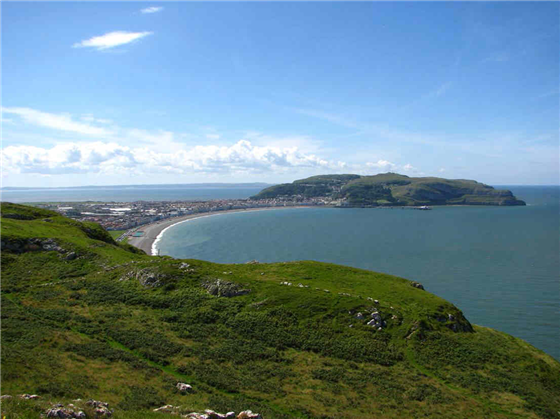
Llandudno in bright sunshine
On our first morning we met up with Ruth and Alan in glorious sunshine in Llandudno, their home base, to start our three-day exploration of the North Wales region. For the first day Anglesey was our destination. A brief stop en route, at Llandfairfechan, gave us a Red-throated Diver, about 200 Common Scoters, passing Kittiwakes, Sandwich Terns and a nearby Peregrine Falcon. Soon after, we were on Anglesey proper in an area of forest, and our first wow-moment. For anyone coming from grey-squirrel country, as we do, then surely the Red Squirrel is a real star, and the one that performed for our camera lived up to that reputation. Not just a bird-hunt then! After an interesting assortment of woodland species, including Siskins and Treecreeper, we moved on. After visiting some interesting wetland habitats we arrived at what is one of the most iconic RSPB reserves on Anglesey, that of South Stack. Here we had very close views of three pairs of Choughs, hundreds of Guillemots and Razorbills, a couple of Puffins, flights of Kittiwakes, several Fulmars, the ever-present Ravens on the look-out for unguarded auk nests, and passing Gannets and Manx Shearwaters. I then defied gravity by clinging to the cliff-edge to take photos of an endemic plant to South Stack, the Spatulate Fleawort – what a great name. A playful Harbour Porpoise performed well off the Stack to add to the growing variety in our notebooks.
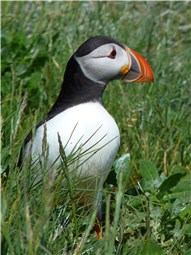
On to another superb area on the north coast of the island, where the main attraction is the tern colony, a good mix of Arctic, Common and Sandwich Terns. Other birds of interest, for us southerners, were ten Red-breasted Mergansers, a handful of Whimbrels, Turnstones, a passing Manx Shearwater, two fly-by Choughs and another non-bird rarity, an Adder, my first for many years, and which fortunately, my better half missed. Wendy does not like snakes. Another Harbour Porpoise, a Bottlenose Dolphin and Atlantic Grey Seal also showed here. Then to Beddmanarch for a small selection of waders and then to Holyhead for views of Black Guillemots.
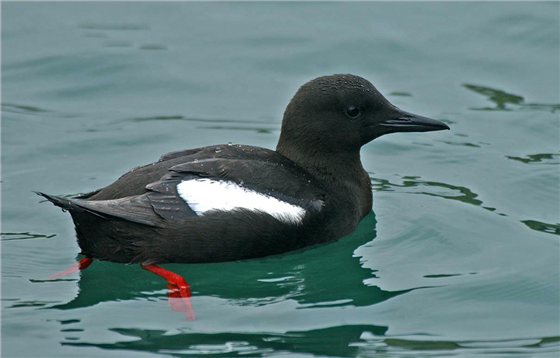
The next day, and more uninterrupted blue skies and sunshine. The target birds for the day were those typical Welsh woodland and moorland species, most of which have been lost as breeders in Bedfordshire. Our first stop was a small private reserve near Llandudno where we heard Pied Flycatchers and Redstarts singing even before we had got out of the car. Two more Choughs flew over our heads – were they following us around? Then to the Ogwen River, where we had two Goosanders and yet more Siskins. Our next stop was in the Snowdonia National Park - what a glorious place! Three Dippers set the scene, followed by several Redstarts, Ravens, Wheatears, Garden Warblers, Spotted Flycatcher, Redpolls, Siskins with nesting material, and our only Grey Wagtail of the trip – so a very bird-rich area indeed. A short drive after that saw us alongside a beautiful lake where Ruth picked out a singing Ring Ouzel perched up on a rocky crag – fabulous. A Common Sandpiper fed alongside the lake edge. Our next stop was a typical piece of Welsh woodland which gave us three Wood Warblers, delightful to hear, but not particularly easy to pick out in the bright sunshine. After four servings of another local speciality – Welsh Rarebit - the next target was yet another fast-disappearing Bedfordshire species – the Tree Pipit. In a newly-felled area a couple of them performed on cue, together with Crossbills passing overhead, more Ravens and Siskins, a singing Redstart and a Red Kite that soared over.
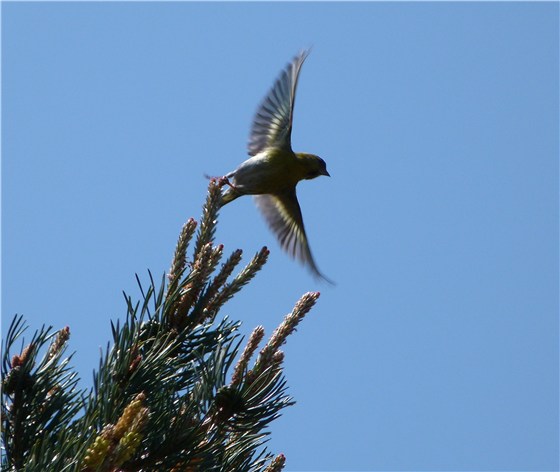
From there, our appetites largely satisfied, Alan drove us to an area of relatively inconspicuous high moorland. We parked by an empty farm building, deserted apart from two pairs of Swallows – how on earth do they find their way back to such an isolated area that humans need satnav to get to? Most of our birding so far had been either from or within 50 yards from the car. Here, though, we had to walk about half a mile across moorland, until we got to our view-point. First we came across another Common Sandpiper and a singing Dunlin, obviously breeding birds, and nice enough. A few more Buzzards passed over and a Raven or two, but neither Wendy or I were expecting what followed. After a wait of maybe 30 minutes, Ruth suddenly called ‘raptor’. Following her instructions, we soon locked onto a wonderful male Hen Harrier. The next 30 minutes was one of the most jaw-dropping experiences of my 45-years birding in Britain. This superb bird was, hopefully, advertising its presence to a watching female with a wonderful ‘skydiving’ display. It first flew vertically to a very high level, then tumbled down, twisting and turning, sometimes upside down (almost inside out), in total free-fall, until it then zoomed up again, only to repeat the performance, time and time again. Occasionally he would take a breather by circling around before starting all over. My description here is totally inadequate and doesn’t do this wonderful performance justice - whoever does his choreography is a genius. Towards the end of our watch a female Merlin dared to interrupt this staggering display. Still awestruck, we headed back towards Llandudno, logging three Whinchats, more Ravens and Cuckoos, a singing Redstart and a Red Kite near its breeding site. A quick look at RSPB Conwy Reserve added three Little Egrets and a group of Dunlins to our very impressive day-list.
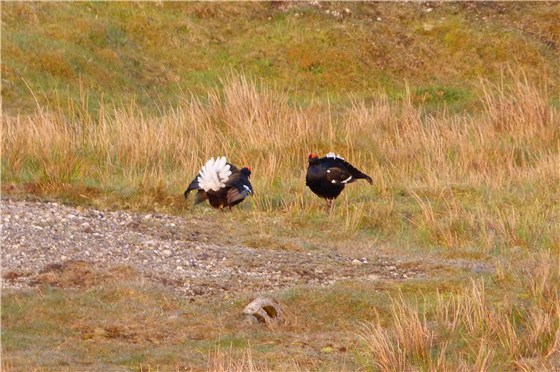
On our third, and sadly last day with Alan and Ruth, we were under their strict instructions to be ready for an early morning start. So, at 04:30 we set off for an area of high moorland. Just an hour later Alan was able to point out a group of about 20 Black Grouse about 300 yards away – nice enough, but around the next corner were seven more grouse, lekking like mad, just 30 yards from the car – breathtaking, probably for them as well as us. If that wasn’t enough, just a short distance further on we had a real Welsh rarity - a Dartford Warbler singing from a patch of gorse, an area it has apparently frequented for the last few months. Another Pied Flycatcher, two more Tree Pipits, Stonechats, Whinchats, four Ravens, Curlews, Siskins, more Crossbills and Redpolls, Garden Warbler, Spotted Flycatcher, a female Hen Harrier and a male Peregrine Falcon chasing, then catching a Wood Pigeon, was the cue for a bacon butty – well earned by Alan and Ruth.
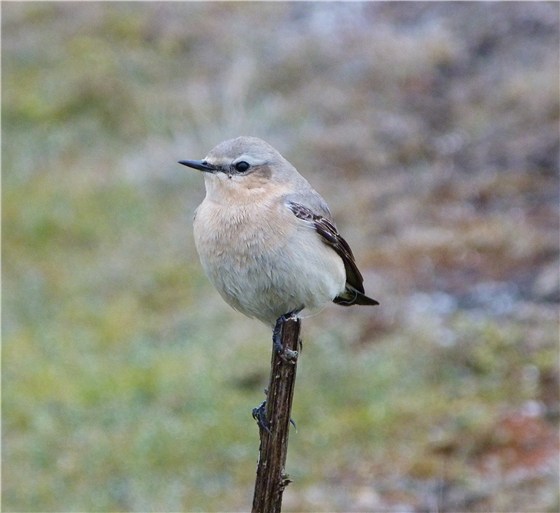
After our belated breakfast, we meandered briefly across the border into England, to the Burton Mere Wetlands RSPB Reserve (formerly called Inner Marsh Farm). What a terrific piece of wetland, making us realise just how badly off Bedfordshire is for this type of habitat. About ten pairs of Little Egrets are breeding, about the same number of Avocets with young, a displaying Ruff was on view, with a Little Ringed Plover, 200 Black-tailed Godwits, and a variety of ducks and other waders adding to our day list. Following a tip-off from the reserve warden, we stood near the reserve entrance looking for a Tawny Owl, and were soon eyeball to eyeball with this enchanting species. The next stop, back in Wales, at Gronant, where a Short-eared Owl showed off before we reached the shoreline, where up to 180 Little Terns are nesting. A Goosander with five young on the River Clwyd pushed our daily count close to 100 species, so once we’d arrived back at Llandudno a quick circuit around the Great Orme added Rock Pipit, Guillemots, Razorbills, Gannets, Kittiwakes, Fulmars and Shags to push our daily total over the century. A long, but truly great day.
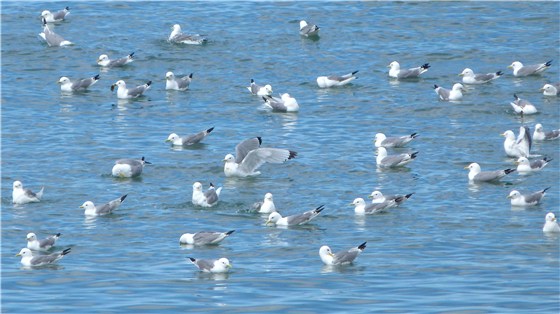
After dinner, we said our goodbyes to Ruth and Alan. The next day Wendy and I ‘did the tourist route’ of the Great Orme, seeing another 6 Choughs, and a Lesser Whitethroat, the latter pushing our trip total to 132 bird species, not to mention some notable mammals, flowers and a snake. Apart from a full house of Welsh specialities one aspect that struck me was just how common some of the so-called common species were. In three days we probably saw more Cuckoos than I’d heard in the last three years in Bedfordshire, as well as stacks of Whitethroats, and even in the high moorland every spindly shrub held a singing Willow Warbler.
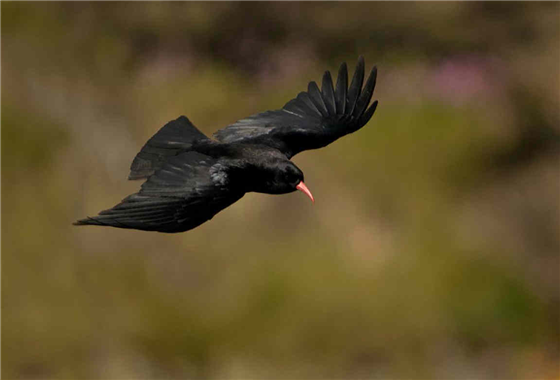
So, in our all too-short stay we enjoyed great food, lovely scenery, perfect weather, fantastic birds and mammals and of course wonderful company, all just about 200 miles from home. If you are interested to find out more about the guided tours led by the Biggest Twitch team in Britain or further afield, then you can contact Ruth and Alan by email at
info@thebiggesttwitch.com or by phone on 01492 872407. Our stay in Wales was an experience that Wendy and I will remember for a good many years.
Barry Nightingale
Thanks Barry for such kind words! If Barry's article has inspired you to visit North Wales, we would love to help you enjoy the very best birds that our region has to offer. We can custom-make a trip that is perfect for you in every way, just drop us a line and we can put together your ideal itinerary.
P.S. Don't forget we are at YWT Potteric Carr Nature Reserve in Yorkshire all day tomorrow Sunday 4th November. Do come along and say hello!